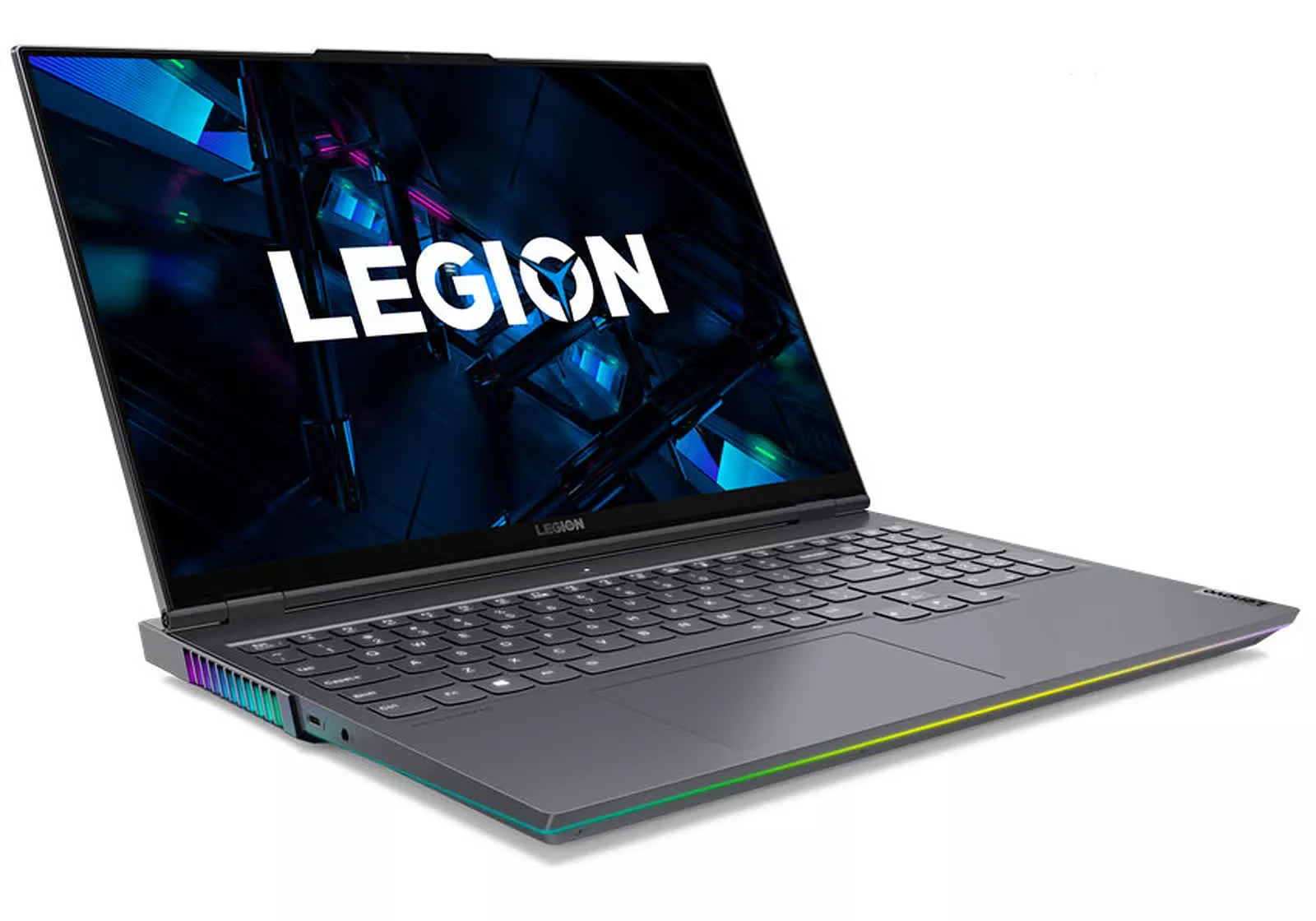Introduction
In the world of gaming laptops, Lenovo has been a bit of a latecomer. With the Legion 7, the company is making an effort to catch up to established brands like Asus and Alienware.
With an Nvidia GeForce RTX 3080 and AMD Ryzen CPU, it seems to have the power, but the model I evaluated is less expensive than rivals like the Alienware x15 and Asus ROG Strix Scar 15.
But is it capable of delivering the goods in real-time? Here are my thoughts after using the laptop for more than a week.
Table of Specifications
| Name | Lenovo Legion 7 |
| Manufacturer | Lenovo |
| CPU | AMD Ryzen 7 5800H |
| Storage Size | 1 TB |
| Screen Size | 16 inches |
| Battery | 87 Whr |
| Battery Timing | 4 hrs |
| Front Camera | Yes |
| Weight | 2.5 kg |
| Dimensions | 356 x 261 x 24 mm |
| Operating System | Windows 11 Home |
| Resolutions | 2560 x 1600 |
| Colors | Grey |
| Refresh Rate | 165 Hz |
| Display Technology | LED |
| Screen Technology | IPS |
| Touch Screen | No |
| Model Number | 16ACHg6 |
| GPU | Nvidia GeForce RTX 3080 16 GB |
| Price in US | 2399 $ |
Design and Keyboard
- A robust aluminium chassis that houses many RGB LEDs.
- A decent numberpad and keyboard with a reliable typing action
- Compared to certain competitors, it is thicker, heavier, and lacks some features.
When you remove the Lenovo Legion 7 from the package, it doesn’t seem very intriguing. When you turn on the laptop, a ring of programmable RGB LEDs appears around the base, in the air vents, and in the Legion emblem on the lid.
The body of this laptop is constructed of gunmetal aluminium, and until all those lights turn on, it resembles one of Lenovo’s famed business portables, which is not to say that it is an unattractive laptop, but it does appear a little odd. It clearly lacks the boldness of the Asus ROG Strix Scar 15 or the monochromatic luxury of the Alienware x15 and x17.
In terms of use, the Legion is a laptop of two parts as well. The construction quality is excellent, with no discernible movement in any location, although at 2.5 kg, it weighs more than the Alienware x15 and Asus laptops and has a thicker body than the Dell. That shouldn’t come as a surprise considering that comparable x15 and Asus systems cost at least £2399, $2399, or €2399, but it is important to know if you want a laptop that is very thin or light.
With a quick typing motion, a numberpad, and a sturdy design, the Legion’s keyboard is perfectly suited for heavy gaming demands. Although the Alienware offers a somewhat more precise typing movement, there is not much difference between the two. If you choose the Asus with its 2mm of travel or a laptop with low-profile mechanical components, you’ll only experience something that feels noticeably heavier.
The trackpad is great, but since it’s on the laptop’s left side, it’s too simple to jog when using the WASD keys. Connect a mouse if you want to play games without feeling annoyed.
In addition to three full-size USB 3.2 Gen 1 connections and a speedier Type-C connection at the back of the Lenovo, each side of the device has a USB 3.2 Gen 1 Type-C connector, one of which supports DisplayPort. All of the ports on the back have power supply. Additionally, the Legion includes an HDMI 2.1 output. Gigabit Ethernet, dual-band Wi-Fi 6, and Bluetooth 5.1 provide connection. Additionally, it has fantastic speakers that provide a tonne of bass and clear treble clarity.
A 720p camera with a privacy shutter is located above the display, although it is incompatible with Windows Hello. Additionally, The Legion does not read fingerprints, thus there is no biometrics. Additionally, the Legion lacks a card reader and does not support Thunderbolt due to AMD internals.
Screen
- A screen with a high resolution provides an immersive experience.
- Displays true colours and a lot of brightness
- Though competitors go faster, the 165Hz refresh rate is adequate.
In terms of displays, the Lenovo Legion 7 gains ground. The screen is somewhat bigger (16 inches) than the 15.6-inch screens in both competitors, which should result in greater immersion. With its 2560 x 1600 resolution and 16:10 aspect ratio, you receive somewhat more vertical space than with the Alienware and Asus computers, giving you more room for work and play.
The quality standards are also excellent. Peak brightness of 466 nits allows for both indoor and outdoor usage, and the contrast ratio of 1084:1 is sufficient to provide vivid colours and a wide colour gamut. The panel displays 96.7% of the sRGB gamut and has an accurate delta E of 1.19, which is sufficient for most major video games.
The Lenovo is more realistic and muted, which is a good thing for many people and many games. The gamut volume level of 101.6% is excellent, albeit a little lower than the statistics provided by those competitors.
The panel of the Legion is not flawless. The Alienware and Asus machines operate at 240Hz and are even quicker if you spend more money, while its 165Hz refresh rate and Nvidia G-Sync compatibility are perfect for any single-player game and suitable for mainstream eSports.
Performance
Performance The RTX 3080 Ryzen 7 5800H has rock-solid mainstream gaming capabilities, but it can’t compete with current Intel CPUs.
The laptop from Lenovo is quiet and cool, and it has no thermal difficulties.
The Nvidia GeForce RTX 3080 on the Lenovo Legion 7 has a huge 165W power limit and is the larger 16GB version of the GPU. Additionally, it has an AMD Ryzen 7 5800H processor with eight cores and a 4.4GHz maximum speed. The 1TB Samsung SSD and 16GB DDR4 RAM in the Legion provide average read and write speeds of 3576 MB/sec and 3013 MB/sec, respectively.
The Legion’s rivals feature DDR5 RAM and PCI-E 4 SSDs in addition to newer GPUs and CPUs, so none of this gear is particularly subpar, but it is a generation behind the times.
In Horizon Zero Dawn at 1080p, the Lenovo RTX 3080 averaged 96 frames per second and reached 88 at the system’s native resolution. The eSports-friendly Rainbow Six Siege averaged 246 frames per second and 201 frames per second when playing Borderlands at 76 and 60 frames per second at those resolutions. These are effective outcomes.
No matter how demanding the single-player game, there is enough performance here to handle it at a smooth framerate, and eSports games will readily run at the rates required by the 165Hz display. The bottom of the laptop is illuminated with RGB lights.
Between the RTX 3080 and the Asus RTX 3070 Ti, there is not much difference. The Lenovo Legion 7 and the RTX 3070 Ti both scored 10,436 on the 3D Mark Time Spy test.
If you’d want the Legion to have a little more energy, its Performance setting increased the Time Spy score to 11,382 and made Borderlands and Rainbow Six more fluid by eight and ten frames, respectively. That’s nice more oomph, and noise levels are seldom an issue. Performance mode increases fan output somewhat, but the Legion is always controllable.
The AMD CPU is good, however this is another element that is becoming older. It has respectable single- and multi-core Geekbench scores of 1360 and 7141, which are sufficient for multitasking and common content production activities.
However, the Asus now utilises the i9-12900H, while the Alienware uses the Core i7-12700H, and both surpass 9500 points on that multi-core test. Even while the 5800H isn’t sluggish, an Intel Alder Lake laptop or a newer Ryzen CPU would be preferable for content production and heavier tasks.
Although the Legion is available with a more powerful Ryzen 9 5900HX CPU, that chip still falls short of those more recent Intel components, and upgrading the laptop increases its cost. As a result, the Legion offers inferior value when compared to the x15 and Asus.
The Legion is, in fact, most affordable when you look below in the price range. The remainder of the specification remains almost the same, and it is available with RTX 3070 graphics cores for £1799 / $1749 / €1799 or with RTX 3060 graphics cores for £1399 / $1509 / €1499. Although such laptops can’t match the performance of the Asus and Alienware computers, they are still far better choices if you want to play popular games without spending as much money. Importantly, the cheaper price makes it easier to overlook the Legion’s outdated parts and flaws.
If you want to spend $2000, €2000, or a little more on a gaming laptop, I’d suggest the Alienware or Asus models since, although being somewhat more expensive than the Legion, your money will go a lot farther with them. Only the Legion’s lower spec tiers are worthwhile investing in.
Battery
A little over an hour should be allotted for the game. You will get around four hours for work or media usage.
In a gaming benchmark, the Lenovo Legion 7 lasted for one hour and fifteen minutes, which is a perfectly typical result for a gaming laptop.
With the screen at 150 nits, the Lenovo handled four hours of routine work and slightly more than four hours of media playing while not being used for gaming. Although they are subpar and fall short of the Asus, the results are expected for a high-end gaming laptop.
Conclusion
The Lenovo Legion 7 has a top-notch screen, a sturdy build, and a reliable keyboard. However, its more expensive variants fall short of the competition’s newer, quicker, and more svelte counterparts. Choose the less expensive models of this large-screen device instead.
Frequently Asked Questions (FAQs)
Is the Lenovo Legion 7 a worthy investment?
An superb gaming laptop, the Lenovo Legion 7 (Gen 6) offers outstanding performance in a variety of games. If you can get your hands on one, this item is well worth the price of admission if you have the money for it.
What distinguishes Legion 7 from Legion 7i?
While the Legion 7 features AMD’s Ryzen 7 and Ryzen 9 equivalents, the Legion 7i offers either a Core i7 or Core i9 CPU. For my evaluation, I received the two more potent processors together with an NVIDIA RTX 3080 Laptop GPU and 32GB of dual-channel DDR4-3200MHz RAM.
Is Lenovo a Chinese company?
Incorporated in Hong Kong in 1988, the business eventually became China’s biggest PC manufacturer. In 2004, Legend Holdings changed its name to Lenovo, and in 2005 it bought up IBM’s erstwhile Personal Computer Division, which had been responsible for the PC industry’s inception in 1981.
Has the Legion 7 from Lenovo a fingerprint sensor?
No. There is no fingerprint reader or other Windows Hello, Biometric Security feature available for the Lenovo Legion Slim 7 Gaming Laptop.

